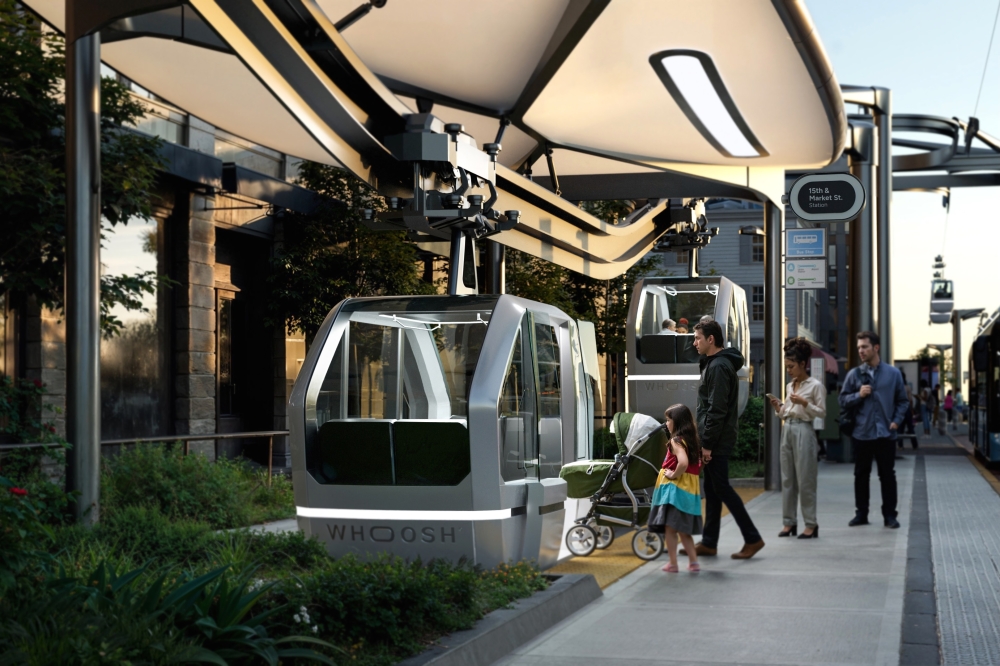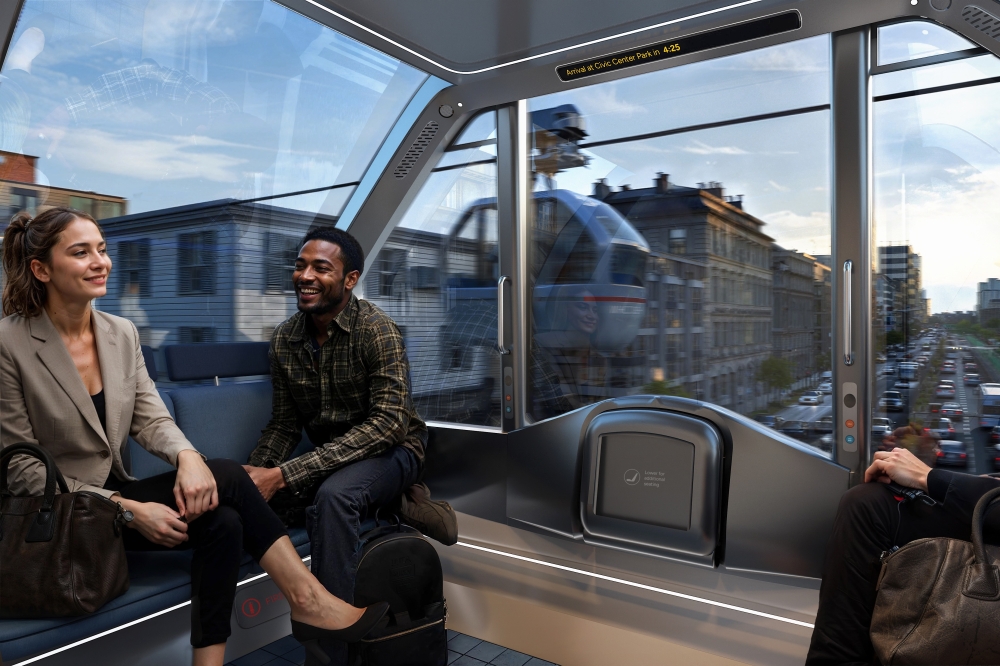In a nutshell
The city of Sugar Land has entered into an agreement with Swyft Cities, a company born from a Google project, to conduct an engineering schematic study and determine the feasibility of adding an electric rail system in the city, according to an Oct. 11 news release from the city.
“Our residents have told us that mobility is among their top priorities, and we are committed to being responsive to their needs by providing opportunities for projects they tell us are important,” City Manager Michael Goodrum said in the release.
How it works
Called Whoosh, the small electric vehicles would allow riders on-demand access to take nonstop trips from stations located at key points in the city, such as the Smart Financial Centre and Sugar Land Town Square, according to the release.
Whoosh vehicles would use a network of cables and rails similar to a gondola, but it would move independently on the cable instead of being a static vehicle attached to a moving cable, according to the Swyft Cities website. The system could be used to transport both individuals and goods.
"We're excited to partner with the city of Sugar Land to bring a new level of fast, convenient mobility to help support the fast-growing region," Swyft Cities CEO Jeral Poskey said in the release.

The engineering study, which began in 2023, is anticipated to finish this year, Sugar Land Communications Director Doug Adolph said in an email. It will assess the feasibility of crossing Hwy. 6 and Hwy. 59—both owned by the Texas Department of Transportation—and moving toward the Smart Financial Centre and Crown Festival Park.
"Most of the system has been planned on city-owned property and TxDOT has been shown the preliminary concept layout. They were very supportive and excited about the project," Adolph said. "Stakeholders would be involved in the process as would the public who would have the opportunity to provide their input."
Zooming out
Sugar Land isn’t the only city interested in implementing the vehicles. Five North Texas cities—Arlington, Dallas, DeSoto, Frisco and Plano—were being considered in spring 2023 to be the pilots for the program, Community Impact reported.
At the time, Swyft Cities was working with the North Central Texas Council of Governments, a regional planning organization, to identify potential locations for the first U.S. installations.

This is the second autonomous project Sugar Land has considered this year, as city officials are also working with aircraft company Wisk Aero to bring an electric "air taxi service" to the city by 2030, city officials said.
“We will be relentless in looking for opportunities like this one to partner with state and federal funding sources to reduce the financial impact to our residents while also delivering mobility projects that support quality of life, economic development and tourism," Goodrum said in the release about Swyft Cities.
Next steps
Holmes Solutions, an engineering firm, has reportedly built a Whoosh prototype in New Zealand and plans to begin construction on a public pilot of the system in 2025, according to a Sept. 12 article from Radio New Zealand.
Meanwhile, Sugar Land staff will seek federal funding to conduct engineering and design of Whoosh's entire three-phase system, with the federal funding process likely taking 10 to 12 months to complete, Adolph said.
Once the project is constructed, fares could pay for its operating and capital costs over time, and public-private partnerships could help fund expansions of the system in the future, Adolph said.





